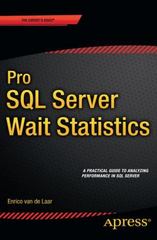Question
Lab exercise 2.1 To complete the basic operations on the sequential list ( the data element type is char), and based on the basic operations
Lab exercise 2.1
To complete the basic operations on the sequential list ( the data element type is char), and based on the basic operations to achieve the following functions:
Initiate a sequential list L;
Insert a,b,c,d,e to the list tail;
Output the list L;
Output the length of the list L;
To judge if the list is empty;
Output the 3rd element of the List;
Output the position of the element b.
//filename:algo2-1.cpp*/
#include
#include
#define MaxSize 50
typedef char ElemType;
typedef struct
{
ElemType data[MaxSize];
int length;
} SqList;
void InitList(SqList *&L) //initiate the list
{
L=(SqList *)malloc(sizeof(SqList));
L->length=0;
}
void DestroyList(SqList *L) //destroy the list
{ free(L);}
bool ListEmpty(SqList *L)
{ return(L->length==0);}
int ListLength(SqList *L)
{ return(L->length);}
void DispList(SqList *L)
{
int i;
if (ListEmpty(L)) return;
for (i=0;i
printf("%c ",L->data[i]);
printf(" ");
}
bool GetElem(SqList *L,int i,ElemType &e)
{
if (i<1 || i>L->length)
return false;
e=L->data[i-1]; //Get value
return true;
}
int LocateElem(SqList *L, ElemType e)
{
int i=0;
while (i
i++;
if (i>=L->length)
return 0;
else
return i+1;
}
bool ListInsert(SqList *&L,int i,ElemType e)
{
int j;
if (i<1 || i>L->length+1)
return false;
i--;
for (j=L->length;j>i;j--)
L->data[j]=L->data[j-1];
L->data[i]=e;
L->length++;
return true;
}
bool ListDelete(SqList *&L,int i,ElemType &e)
{
int j;
if (i<1 || i>L->length)
return false;
i--;
e=L->data[i];
for (j=i;j
L->data[j]=L->data[j+1];
L->length--; return true;
}
//filename:exp2-1.cpp
#include
#include
#define MaxSize 50
typedef char ElemType;
typedef struct
{
ElemType data[MaxSize];
int length;
} SqList;
extern void InitList(SqList *&L);
extern void DestroyList(SqList *L);
extern bool ListEmpty(SqList *L);
extern int ListLength(SqList *L);
extern void DispList(SqList *L);
extern bool GetElem(SqList *L,int i,ElemType &e);
extern int LocateElem(SqList *L, ElemType e);
extern bool ListInsert(SqList *&L,int i,ElemType e);
extern bool ListDelete(SqList *&L,int i,ElemType &e);
void main()
{
SqList *L;
ElemType e;
printf("Basic operations for sequential list: ");
printf(" (1)initiate list L ");
InitList(L);
printf(" (2)insert a,b,c,d,e ");
ListInsert(L,1,'a');
ListInsert(L,2,'b');
ListInsert(L,3,'c');
ListInsert(L,4,'d');
ListInsert(L,5,'e');
printf(" (3)output list L:");
DispList(L);
printf(" (4)the length =%d ",ListLength(L));
printf(" (5) the list L is %s ",(ListEmpty(L)?" empty":"not empty"));
GetElem(L,3,e);
printf(" (6)the 3rd element is =%c ",e);
printf(" (7)The position of a =%d ", LocateElem(L,'a'));
DestroyList(L);}}
Step by Step Solution
There are 3 Steps involved in it
Step: 1

Get Instant Access to Expert-Tailored Solutions
See step-by-step solutions with expert insights and AI powered tools for academic success
Step: 2

Step: 3

Ace Your Homework with AI
Get the answers you need in no time with our AI-driven, step-by-step assistance
Get Started


